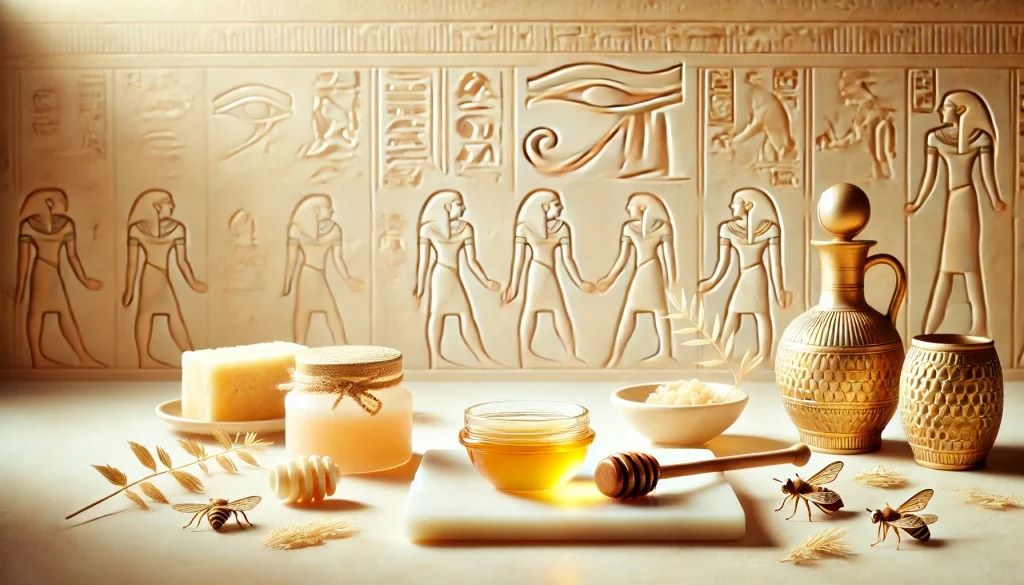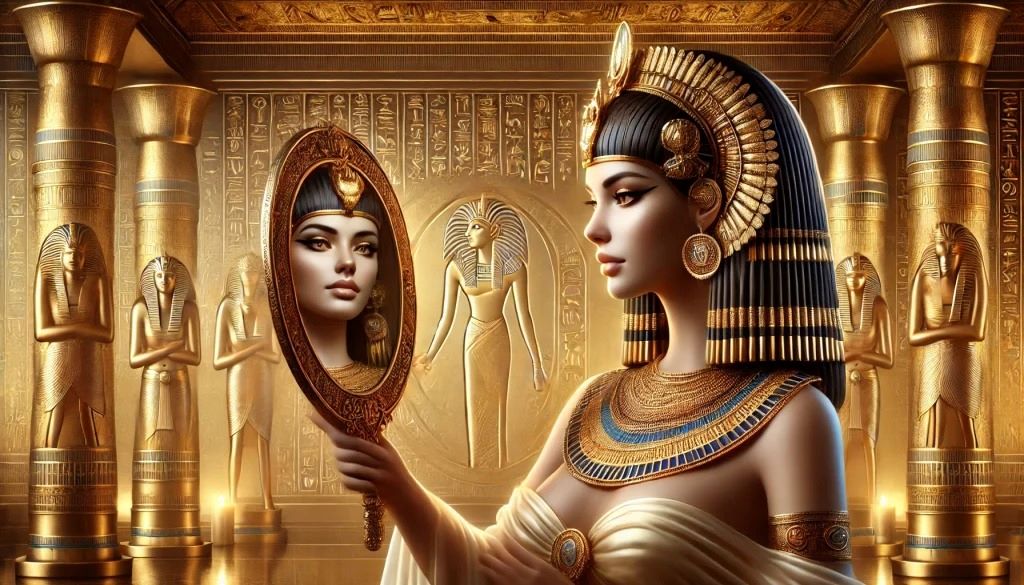Ancient Egypt captivates us with its timeless beauty secrets and sophisticated cosmetic practices. The civilization along the Nile River developed remarkable anti-aging techniques thousands of years ago. Modern beauty enthusiasts can learn valuable lessons from these ancient practices. Blushed Beauty Barla explores how historical beauty wisdom continues to influence contemporary skincare and makeup artistry.
The ancient Egyptians pioneered many cosmetic innovations we still use today. Their advanced understanding of natural ingredients created effective anti-aging solutions. Additionally, their meticulous approach to personal care established foundations for modern beauty routines. The comprehensive history of makeup egypt reveals sophisticated techniques that protected skin while enhancing natural beauty.
Egyptian beauty practices served multiple purposes beyond mere aesthetics. They protected against harsh desert conditions and demonstrated social status. Therefore, these ancient secrets combined practical skincare with spiritual and cultural significance.
The Foundation of Egyptian Beauty Philosophy
Ancient Egyptians believed beauty reflected divine favor and inner harmony. Their approach emphasized prevention rather than correction. This philosophy created comprehensive beauty routines addressing multiple aging factors simultaneously.
The concept of ma’at, representing balance and order, influenced Egyptian beauty practices. They sought harmony between physical appearance and spiritual well-being. However, practical considerations like sun protection equally motivated their innovations.
Egyptian beauty standards valued smooth, unblemished skin above all else. Both men and women participated in elaborate skincare routines. Additionally, their practices demonstrated remarkable understanding of dermatological principles we recognize today.
Natural Ingredients: The Heart of Egyptian Anti-Aging
Precious Oils and Their Benefits
Ancient Egyptians mastered the art of oil extraction and blending. Moringa oil, extracted from the ben tree, provided exceptional moisturizing properties. This lightweight oil penetrated deeply without leaving greasy residues.
Frankincense oil served as their premium anti-aging treatment. Modern research confirms its ability to stimulate cellular regeneration and reduce inflammation. Therefore, ancient Egyptians intuitively chose ingredients science now validates.
Argan oil, though primarily Moroccan, reached Egyptian markets through trade routes. They recognized its remarkable ability to restore skin elasticity and reduce fine lines. Additionally, its high vitamin E content provided antioxidant protection against environmental damage.
Mineral-Rich Treatments
Dead Sea minerals played crucial roles in Egyptian beauty routines. These mineral deposits contained high concentrations of magnesium, calcium, and potassium. Regular treatments with these minerals improved skin texture and reduced visible aging signs.
Clay masks using Nile River mud provided deep cleansing and detoxification. The mineral-rich sediment drew impurities from pores while delivering essential nutrients. However, they carefully sourced clay from specific locations for optimal benefits.
Salt scrubs using Red Sea salt removed dead skin cells and stimulated circulation. This natural exfoliation revealed younger-looking skin beneath. Additionally, the minerals in sea salt provided therapeutic benefits for various skin conditions.
Cleopatra’s Beauty Arsenal
The Legendary Milk Baths
Cleopatra’s famous milk baths contained powerful anti-aging ingredients. Donkey milk provided lactic acid for gentle exfoliation and alpha hydroxy acids for skin renewal. These natural compounds effectively addressed multiple aging concerns simultaneously.
The milk proteins delivered essential amino acids directly to skin cells. This nourishment supported collagen production and maintained skin elasticity. Therefore, these luxurious baths combined pleasure with proven anti-aging benefits.
Modern analysis reveals donkey milk contains higher concentrations of beneficial compounds than cow milk. Its unique protein structure makes nutrients more readily available to skin cells. Additionally, the natural pH balance of donkey milk closely matches human skin.
Gold-Infused Beauty Treatments
Ancient Egyptians incorporated gold into premium beauty treatments. Gold leaf masks provided anti-inflammatory benefits while creating a luxurious experience. The metal’s properties helped calm irritated skin and reduce redness.
Gold nanoparticles, though not understood scientifically then, offered unique skincare benefits. They enhanced ingredient absorption and provided mild antimicrobial effects. However, these treatments remained exclusive to royalty and wealthy aristocrats.
Archaeological evidence suggests gold-infused cosmetics contained other precious ingredients. Pearls, crushed gemstones, and rare plant extracts enhanced the treatments’ effectiveness. Additionally, the psychological benefits of luxury treatments contributed to overall well-being.
Daily Skincare Rituals and Routines
Morning Protection Practices
Egyptian morning routines emphasized sun protection and hydration. They applied oil-based formulations before venturing into harsh desert conditions. These protective barriers prevented moisture loss and UV damage.
Kohl application around eyes served both cosmetic and practical purposes. The antimony-based formulation reflected sunlight and reduced glare. Therefore, this iconic Egyptian look provided genuine eye protection benefits.
Plant-based sunscreens using ingredients like rice bran and sesame oil offered moderate UV protection. While less effective than modern formulations, they demonstrated understanding of sun damage prevention. Additionally, wide-brimmed headdresses provided additional physical protection.
Evening Restoration Rituals
Nighttime routines focused on repair and restoration. Egyptians removed makeup using oil-based cleansers that dissolved pigments without harsh scrubbing. This gentle approach preserved skin barrier function.
Overnight treatments using honey and royal jelly provided intensive nourishment. These natural ingredients contained enzymes and antioxidants that supported cellular repair processes. However, only affluent individuals could afford such premium ingredients regularly.
Facial massage techniques using jade rollers or smooth stones improved circulation and lymphatic drainage. These practices reduced puffiness and promoted healthy skin appearance. Additionally, the relaxation benefits contributed to overall stress reduction.
The Role of Diet and Lifestyle
Nutritional Foundations
Ancient Egyptian diets naturally supported anti-aging goals. High consumption of fish provided omega-3 fatty acids for skin health. Fresh fruits and vegetables delivered antioxidants that protected against cellular damage.
Dates and figs supplied natural sugars along with beneficial minerals and vitamins. These foods supported energy levels while providing nutrients essential for healthy skin function. Therefore, their natural diet complemented topical beauty treatments.
Beer, consumed daily by most Egyptians, provided B vitamins and probiotics. While alcohol in excess damages skin, moderate consumption of unprocessed beer offered nutritional benefits. Additionally, the brewing process created beneficial compounds not found in raw grains.
Physical Activity and Beauty
Egyptian society valued physical fitness and graceful movement. Dancing, swimming in the Nile, and daily labor maintained muscle tone and cardiovascular health. This active lifestyle supported overall vitality and youthful appearance.
Yoga-like stretching practices helped maintain flexibility and posture. Good posture contributed significantly to youthful appearance by preventing premature aging signs. However, these practices also supported mental well-being and stress management.
According to research published by the National Geographic, ancient Egyptians understood connections between physical activity, mental health, and appearance better than many modern societies realize.
Makeup as Medicine and Protection
Functional Cosmetics
Egyptian makeup served medicinal purposes beyond aesthetics. Eye cosmetics contained ingredients that prevented infections and reduced inflammation. The antimicrobial properties of kohl protected against common eye diseases.
Lip cosmetics used beeswax and plant oils to prevent chapping in dry desert conditions. These formulations provided long-lasting protection while enhancing natural lip color. Additionally, some formulations contained medicinal herbs for healing properties.
Cheek and body paints often incorporated beneficial plant extracts. Henna provided antimicrobial benefits while creating decorative patterns. Therefore, body art served both cultural and health purposes simultaneously.
Color Psychology and Well-Being
Egyptians understood color’s psychological impact on mood and confidence. Specific color combinations were believed to attract positive energy and ward off negative influences. This holistic approach addressed mental well-being alongside physical appearance.
Green eye makeup, made from malachite, represented fertility and rebirth. Black kohl symbolized protection and power. However, these symbolic meanings reinforced the psychological benefits of looking and feeling attractive.
The ritual of applying makeup created meditative moments that reduced stress. This daily self-care practice contributed to overall mental health and well-being. Additionally, the social aspects of shared beauty routines strengthened community bonds.
Modern Applications of Ancient Wisdom
Scientific Validation
Contemporary research validates many ancient Egyptian beauty practices. Studies confirm the anti-aging benefits of ingredients like honey, milk, and various plant oils. Therefore, modern consumers can confidently incorporate these time-tested ingredients.
Dermatological research supports the Egyptian emphasis on gentle, oil-based cleansing. Harsh detergents strip natural oils and accelerate aging. Additionally, their focus on sun protection aligns with current understanding of photoaging prevention.
The holistic Egyptian approach to beauty, combining topical treatments with lifestyle factors, matches modern anti-aging strategies. Comprehensive approaches addressing multiple factors prove more effective than isolated treatments. However, modern technology can enhance the delivery and stability of ancient ingredients.
Contemporary Adaptations
Modern beauty brands increasingly incorporate Egyptian-inspired ingredients and techniques. Luxury skincare lines feature ingredients like frankincense, gold, and milk proteins. These formulations combine ancient wisdom with modern delivery systems.
Spa treatments worldwide offer Egyptian-inspired services like Cleopatra baths and Dead Sea mineral treatments. These experiences provide both therapeutic benefits and connection to historical beauty traditions. Additionally, the psychological benefits of luxury treatments enhance overall effectiveness.
Home skincare routines can easily incorporate Egyptian principles. Simple practices like oil cleansing, honey masks, and gentle massage provide accessible anti-aging benefits. Therefore, ancient wisdom remains relevant for contemporary beauty enthusiasts.
Conclusion
Ancient Egyptian anti-aging secrets offer timeless wisdom for modern beauty enthusiasts. Their sophisticated understanding of natural ingredients, holistic wellness, and preventive care created effective anti-aging strategies. Additionally, their emphasis on combining practical benefits with psychological well-being provides valuable lessons for contemporary skincare.
The Egyptian approach emphasized consistency, quality ingredients, and comprehensive care routines. Modern science validates many of their practices while technology enhances ingredient delivery and stability. Therefore, combining ancient wisdom with contemporary knowledge creates optimal anti-aging strategies.
Key takeaways include the importance of gentle, oil-based cleansing, regular use of antioxidant-rich natural ingredients, and holistic approaches addressing lifestyle factors. The timeless appeal of Egyptian beauty secrets demonstrates that effective anti-aging practices transcend cultural and temporal boundaries.
Frequently Asked Questions
What were the most important anti-aging ingredients used by ancient Egyptians? Ancient Egyptians relied on moringa oil, frankincense, honey, milk, and Dead Sea minerals as primary anti-aging ingredients. Additionally, they used gold, precious stones, and various plant extracts for premium treatments.
How did Cleopatra maintain her legendary beauty? Cleopatra used donkey milk baths, gold-infused face masks, and comprehensive skincare routines combining multiple natural ingredients. Therefore, her beauty regimen emphasized consistent care with the finest available ingredients.
Can modern people safely use ancient Egyptian beauty practices? Most ancient Egyptian practices using natural ingredients remain safe and effective today. However, avoid lead-based cosmetics and ensure proper sourcing of ingredients like essential oils and minerals.
What role did diet play in Egyptian anti-aging practices? Egyptian diets rich in fish, fruits, vegetables, and fermented foods naturally supported skin health and anti-aging goals. Additionally, moderate beer consumption provided beneficial nutrients while dates and figs supplied antioxidants.
How did ancient Egyptian makeup serve protective purposes? Egyptian cosmetics contained antimicrobial ingredients that prevented infections and provided sun protection. Therefore, their makeup served both aesthetic and health purposes, particularly around the delicate eye area.
Read more:
5 useful tips to apply eyeliner in different ways and be flawless eyeliner looks





